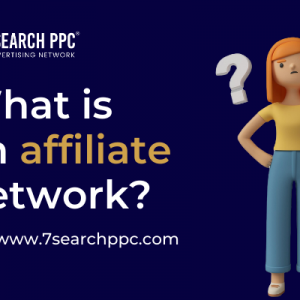In the ever-evolving landscape of digital marketing, programmatic advertising platform has emerged as a game-changer. For marketers and businesses looking to maximize their advertising spend, understanding programmatic ads is essential. This guide will walk you through the basics, benefits, and mechanisms of programmatic advertising, and answer some common questions.
What Are Programmatic Ads?
Programmatic ads refer to the automated process of buying and selling online advertising space. Unlike traditional advertising methods, which rely on human negotiation and manual insertion orders, programmatic advertising utilizes technology and algorithms to streamline the entire process.
How Programmatic Advertising Works
Programmatic advertising uses a combination of data analysis and machine learning to deliver ads to the right audience at the right time. Here’s a simplified breakdown of how it works:
- Advertiser: A business wants to promote a product and sets a budget.
- Programmatic Ads Platform: The advertiser uses a programmatic ads platform, such as Demand-Side Platforms (DSPs), to automate the ad buying process.
- Data Collection: The platform collects data about user behavior, demographics, and interests.
- Real-Time Bidding: When a user visits a website, a bidding process occurs in milliseconds. Advertisers place bids for the ad space based on the collected data.
- Ad Delivery: The winning bid results in the display of the ad to the user in real-time.
Benefits of Programmatic Advertising
Programmatic advertising offers numerous advantages that can enhance your marketing strategy. Here are some key benefits:
- Efficiency: Automating the ad buying process saves time and reduces human error.
- Targeting: Programmatic ads utilize advanced targeting capabilities, ensuring your ads reach the most relevant audience.
- Real-Time Analytics: Advertisers receive immediate feedback on campaign performance, allowing for real-time adjustments.
- Cost-Effectiveness: By optimizing bids, advertisers can achieve better ROI compared to traditional ad buying methods.
Types of Programmatic Advertising
Direct vs. Indirect Programmatic Ads
- Direct Programmatic Ads: These are bought directly from a publisher’s inventory, ensuring a guaranteed placement and often a more favorable price.
- Indirect Programmatic Ads: Involves real-time bidding (RTB), where ads are purchased through an auction process. This method offers a wider reach but can be less predictable in terms of pricing and placement.
Programmatic Ads Network
A programmatic ads network acts as an intermediary between advertisers and publishers. These networks aggregate inventory from multiple publishers, making it easier for advertisers to access a broader audience. Examples include Google Display Network and AdRoll.
How to Get Started with Programmatic Advertising
Step 1: Choose the Right Programmatic Ads Platform
Selecting a suitable programmatic ads platform is crucial. Here are a few popular options:
- Google Ads: Offers a comprehensive suite for programmatic buying.
- The Trade Desk: Known for its robust targeting capabilities.
- MediaMath: Provides a user-friendly interface and powerful analytics tools.
Step 2: Define Your Goals and Audience
Before diving into programmatic advertising, it's essential to establish clear goals. Are you looking to increase brand awareness, drive website traffic, or generate leads? Additionally, define your target audience based on demographics, interests, and online behavior.
Step 3: Set a Budget
Establish a budget that aligns with your goals. Programmatic advertising can be cost-effective, but it’s essential to monitor spending closely, especially if you opt for real-time bidding.
Step 4: Create Compelling Ad Content
The success of your programmatic ads relies heavily on the quality of your creative content. Ensure your ads are visually appealing and convey a clear message. A/B testing different creatives can help identify what resonates best with your audience.
Step 5: Monitor and Optimize Your Campaign
Once your campaign is live, continuously monitor its performance. Use the analytics provided by your programmatic ads platform to assess engagement, conversions, and ROI. Be prepared to make adjustments based on the data you collect.
Common Challenges in Programmatic Advertising
While programmatic advertising offers numerous benefits, it’s not without its challenges. Here are some common hurdles advertisers may face:
Ad Fraud
Ad fraud, including click fraud and impression fraud, can drain your budget without delivering real results. To combat this, consider using fraud detection tools and partnering with reputable programmatic ads networks.
Data Privacy Concerns
With increasing regulations around data privacy, advertisers must navigate these challenges carefully. Ensure compliance with laws like GDPR and CCPA, and prioritize transparency in your data collection practices.
Complexity
The programmatic advertising ecosystem can be complex, with various platforms, networks, and bidding strategies. It’s essential to invest time in understanding the landscape or consider hiring experts to manage your campaigns.
How can I measure the success of my programmatic ads?
You can measure the success of your programmatic ads through various metrics, including impressions, click-through rates (CTR), conversion rates, and return on investment (ROI). Most programmatic ads platforms provide comprehensive analytics tools to track these metrics.
Conclusion
Programmatic advertising is revolutionizing the way businesses approach digital marketing. By leveraging technology to automate the buying and selling of ad space, advertisers can efficiently target their desired audience and maximize their marketing budget. Whether you’re a small business owner or a seasoned marketer, understanding the fundamentals of programmatic ads is essential for staying competitive in today’s digital landscape. With the right strategies and tools, you can unlock the full potential of programmatic advertising and drive meaningful results for your business.
Frequently Asked Questions (FAQs)
What is the difference between programmatic advertising and traditional advertising?
Programmatic advertising automates the buying and selling of ad space through technology, while traditional advertising relies on manual processes and negotiations. This automation enables more efficient targeting and real-time analytics in programmatic ads.
How do I choose a programmatic ads platform?
When choosing a programmatic ads platform, consider factors such as user interface, available inventory, targeting capabilities, pricing model, and support services. It’s advisable to read reviews and possibly test a few platforms before making a decision.
Can small businesses benefit from programmatic advertising?
Absolutely! Programmatic advertising can be cost-effective and scalable, making it accessible for small businesses. With proper targeting, even limited budgets can achieve significant results.
What is real-time bidding (RTB)?
Real-time bidding (RTB) is a method of buying and selling ad inventory through an auction process in real time. Advertisers bid on individual ad impressions based on user data and context, allowing for highly targeted advertising.











